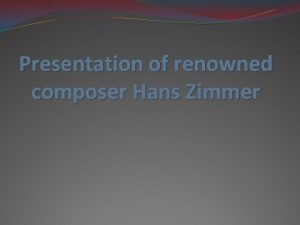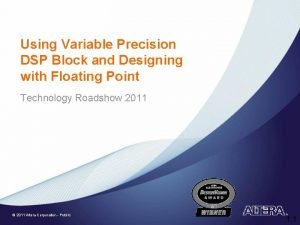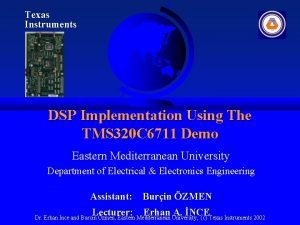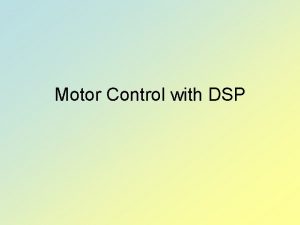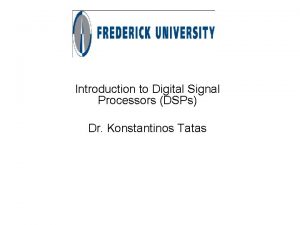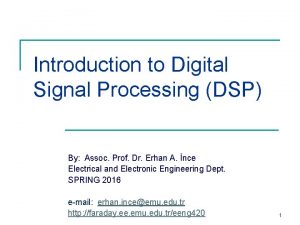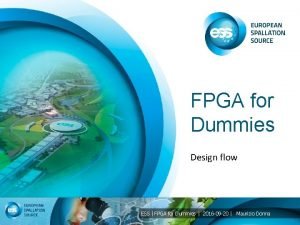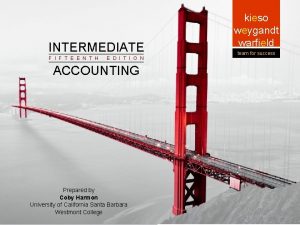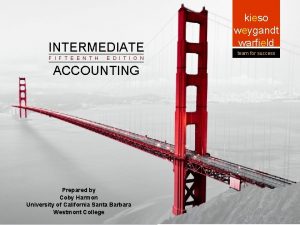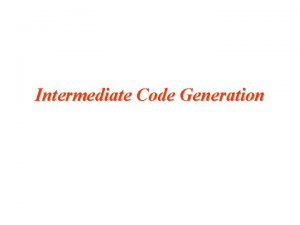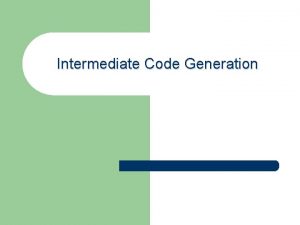Respiratory monitoring DSP II Intermediate presentation Hans De













- Slides: 13

Respiratory monitoring DSP II – Intermediate presentation Hans De Clercq & Rogier Corthout 18/11/2008 1

Some background… Hans De Clercq & Rogier Corthout 18/11/2008 2

Some background… � Project integrated in master thesis: ◦ “Textile-integrated data-acquisition system” ◦ Prof. Dr. Ir. R. Puers � Application for monitoring breathing disorders (e. g. SIDS) during sleep for babies � Accelerometer-based design measuring movements during breathing Hans De Clercq & Rogier Corthout 18/11/2008 3

Some background… � Non-uniform chest/abdomen expansion measurement variation of inclination using accelerometers placed sideways on the chest/abdomen � XY-plane modulus & angle Respiration g Hans De Clercq & Rogier Corthout 06/11/2008 4

Some background… � Monitoring of respiratory signals: ◦ Reliable detection: ◦ ◦ �Detection different breathing patterns �Measuring multiple parameters (ECG, O 2, …) to increase robustness �Real-time measurement and processing in MATLAB/Simulink Comfortable Washable/durable Innovative Relatively low-cost Hans De Clercq & Rogier Corthout 18/11/2008 5

Raw signal vs gold standard Accelerometer (angle) Spirometer Hans De Clercq & Rogier Corthout 18/11/2008 6

Objectives project DSP II Signal conditioning Adaptive filtering Information processing Decision making • Noise cancellation from low-cost accelerometers • Offset cancellation & normalization • Extraction dominant breathing frequency using adaptive band-pass filter • Peak and amplitude detection • Phase shift with gold standard • Heavy/quiet breathing, coughing, talking and undefined signal Hans De Clercq & Rogier Corthout 18/11/2008 7

• Noise cancellation from low-cost accelerometers Signal conditio • Offset cancellation ning • Extraction dominant breathing frequency using adaptive band. Adaptive pass filtering Signal conditioning Informat • Peak and amplitude detection • Phase shift with gold standard processi ng • Heavy/quiet breathing, coughing, Decision talking and undefined signal making � Noise cancellation from low-cost accelerometers ◦ Noise limits accelerometer resolution: 1000μg/sqrt(Hz) ◦ Analog filtering (simple RC) anti-aliasing: sample frequency ADC ~ 10 Hz � Offset cancellation ◦ Simple, but steep high-pass IIR-filtering (cut-off ~ 0. 01 Hz) ◦ E. g. second order � Normalization with reference signal Hans De Clercq & Rogier Corthout 18/11/2008 8

Adaptive filtering � Detect • Noise cancellation from low-cost accelerometers Signal conditio • Offset cancellation ning • Extraction dominant breathing frequency using adaptive band. Adaptive pass filtering Informat • Peak and amplitude detection • Phase shift with gold standard processi ng • Heavy/quiet breathing, coughing, Decision talking and undefined signal making dominant breathing frequency (band) using N-points FFT: ◦ Maximum magnitude frequency ◦ Mean power frequency ◦ N? : accuracy vs transient response � Design adaptive band-pass filter � Comparison of dominant frequency with gold standard… Hans De Clercq & Rogier Corthout 18/11/2008 9

Information processing � Peak and amplitude detection • Noise cancellation from low-cost accelerometers Signal conditio • Offset cancellation ning • Extraction dominant breathing frequency using adaptive band. Adaptive pass filtering Informat • Peak and amplitude detection • Phase shift with gold standard processi ng • Heavy/quiet breathing, coughing, Decision talking and undefined signal making ◦ Peak detection by searching local maxima (e. g. zero -crossings of first derivative) ◦ Amplitude detection between consecutive peaks ◦ Detection mean amplitude or average power (box plot) per breathing pattern (see later) � Phase shift with gold standard ◦ Normally consistently small during quiet breathing [GOLLEE] ◦ Exception: transient/fast movement, e. g. forced expiration (coughing) Hans De Clercq & Rogier Corthout 18/11/2008 10

Decision making � Determination • Noise cancellation from low-cost accelerometers Signal conditio • Offset cancellation ning • Extraction dominant breathing frequency using adaptive band. Adaptive pass filtering Informat • Peak and amplitude detection • Phase shift with gold standard processi ng • Heavy/quiet breathing, coughing, Decision talking and undefined signal making of breathing pattern � Define clusters through parameter processing (e. g. fuzzy logic [BABUSKA]) in 3 D-space over time: ◦ Frequency (and difference with gold standard) ◦ Amplitude (and difference with gold standard) ◦ Phase shift with gold standard for both inspiration and expiration Advantage: clustering techniques can reveal structures in data without relying on assumptions common to conventional statistical methods, such as the underlying statistical distribution Hans De Clercq & Rogier Corthout 18/11/2008 11

Block scheme Accelerometer signal Offset & Adaptive BPF noise cancellation Spirometer signal N-points FFT Peak & amplitude detection Phase shift Extraction dominant frequency Breathing rate Decision making (fuzzy logic) Breathing pattern Error rate Hans De Clercq & Rogier Corthout 18/11/2008 12

Respiratory monitoring DSP II – Intermediate presentation Hans De Clercq & Rogier Corthout 18/11/2008 13

